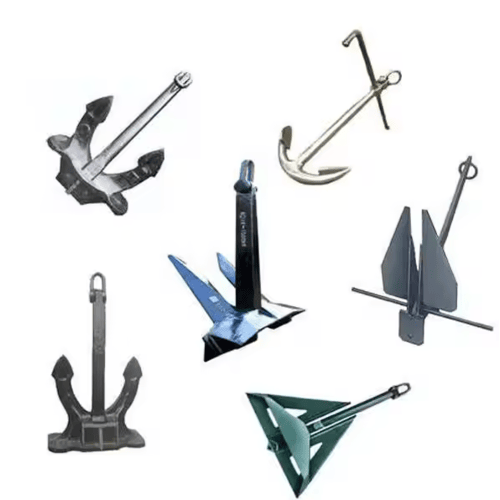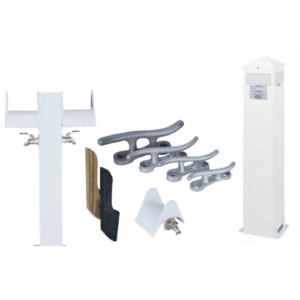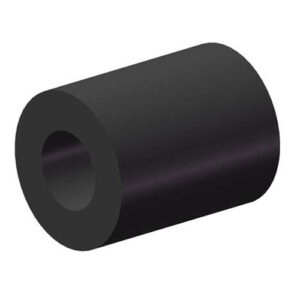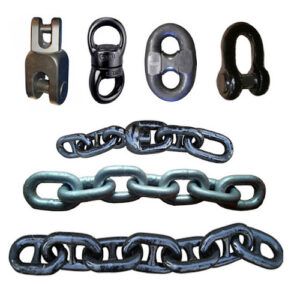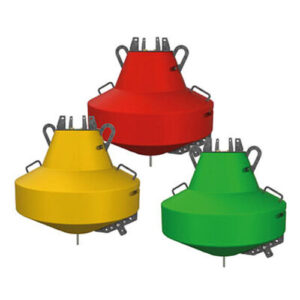Key Features of Marine Anchor
1. Design and Structure of Anchors
Anchors feature fluke, plow, or stockless designs to suit various seabed types and vessel sizes. Their balanced geometry ensures proper penetration and secure holding under load, while the shank and crown enhance grip in sand, mud, or gravel.
2. Anchors Material
Manufacturers use high-tensile steel or cast iron treated with hot-dip galvanization or protective coatings. These materials resist corrosion, impact, and deformation, making them ideal for long-term deployment in harsh marine conditions.
3. Lifting Capacity
While not lifting equipment, anchors bear immense loads when securing vessels against wind, current, and waves. Their holding capacity varies by type, weight, and seabed condition—often supporting tens of tons of force without slippage.
4. Installation and Integration of Anchors
Crews deploy anchors using windlasses or capstans, connecting them via chains or rope lines to the hawse pipe. Standardized shank sizes and mounting systems allow seamless integration with most marine anchoring systems.
5. Safety and Control
Proper anchor deployment prevents drift and collision, especially during adverse weather. Design elements like roll bars and weighted tips ensure reliable setting, while retrieval systems with chain stoppers and brakes offer full operational control.
6. Durability and Maintenance of Marine Anchor
Anchors require minimal maintenance when manufactured with corrosion-resistant finishes. Regular inspections for wear, rust, and deformation ensure consistent performance, especially when used frequently in abrasive seabed environments.
7. Versatility
Available in multiple styles such as Danforth, Bruce, Delta, and Admiralty, these anchors accommodate all vessel types and anchoring scenarios. They suit applications ranging from deep-sea mooring to emergency anchorage and temporary station keeping.
8. Compliance and Standards
All anchors comply with IACS, IMO, and ISO standards for anchoring equipment. Classification societies such as DNV, ABS, and Lloyd’s Register certify them for strength, material quality, and holding capacity, ensuring global marine acceptance.
